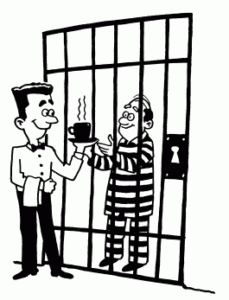
Mary works at the Judicial Branch of the Centralized Infractions Bureau of a major metropolitan area. She enjoys giving her “customers” good service – and is always looking for ways to improve customer satisfaction.
“However,” she explained, “the problem we face is quite obvious. Being a government enforcement agency, we must follow many rules and there is literally zero leeway in the options we can give defendants in how to take care of their infractions.”
Mary is absolutely right.
Many enforcement and regulatory agencies face similar “customer service” situations: police departments, judicial courts, customs offices, immigration counters and licensing bureaus, to name a few. Staff may be eager to improve customer satisfaction and provide wonderful service, but they cannot jeopardize the integrity of the law or equality in the administration of justice.
Can these government officers be flexible and change the rules? No, that would make a mockery of the law.
Can they give highly personalized and customized service? No, that could lead to allegations of favoritism, partiality and scandal.
But can government departments and civil servants offer speed? Yes. Courtesy? Yes. Useful and easy-to-understand information? Yes. Proactive advice on what to expect and how to navigate each step in the process? Yes. Online applications and filing systems? Yes. Convenient locations? Yes. Extended hours of operation? Yes. An attractive physical environment? Yes. Support materials such as pens, paper, photocopy machines and telephones? Yes. Dignity and respect for all?
Yes, yes, yes! There are ways they can improve customer satisfaction.
I call these different aspects of service your “value dimensions.” There are many “value dimensions” that apply in every service situation, even in the judicial system.
No matter who you are, what you do or where you work, you can find a way to increase service value, improve customer satisfaction and make your service better.
Key Learning Point To Improve Customer Satisfaction
Every interactive situation offers an opportunity to improve customer satisfaction and your service to others. If you can’t be flexible, be fast. If you can’t be generous, be courteous. If you can’t be personal, be informative. If you can’t be low price, be high value to improve customer satisfaction.
Never let your situation become an excuse for giving up. Find another way to serve someone better and improve customer satisfaction.
Action Steps To Improve Customer Satisfaction
Stop whining, complaining or using circumstances as an excuse for not improving your service. Everyone can make service improvements, no matter who you are or where you are. Look around. Find a better way. Then do it.
PS: Don’t use this lesson to avoid making service improvements where you can and should. If you can be flexible, bend. If you can be generous, give. If you can be faster, hustle.
——————————————————————————————————————————
You may use this article in your free newsletter, website or publication providing you include this complete statement (below) with active links to the websites:
Copyright, Ron Kaufman. Used with permission. Ron Kaufman is the world’s leading educator and motivator for upgrading customer service and uplifting service culture. He is author of the bestselling “Uplifting Service” book and founder of Uplifting Service. To enjoy more customer service training and service culture articles, visit www.RonKaufman.com.
For commercial use of this article in a paid newsletter, publication, or training program, please contact us.



